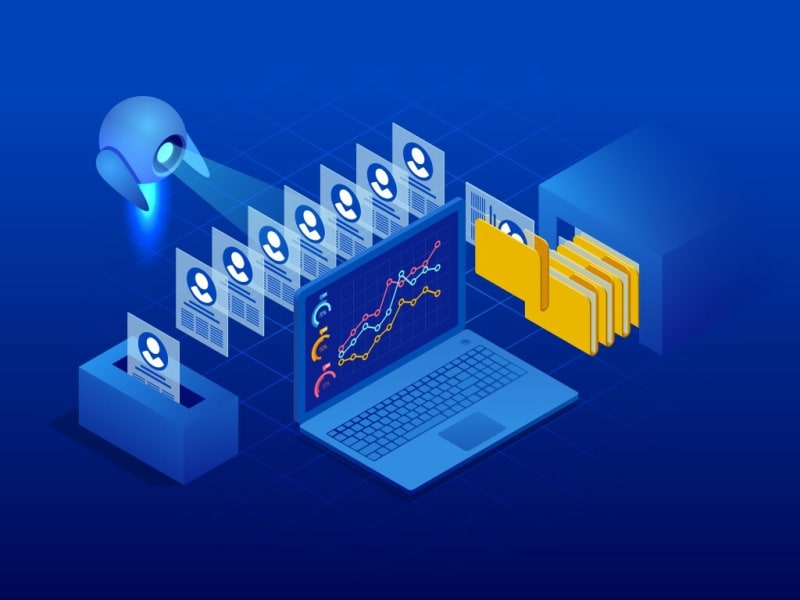Introduction
In the era of digital transformation, data has emerged as a valuable asset for organizations across industries. With the ever-growing volume, velocity, and variety of data, traditional database systems are facing challenges in terms of storage, management, and analysis. This has led to the rise of AI-powered databases, a groundbreaking technology that combines the capabilities of artificial intelligence and database systems. In this article, we will delve into the world of AI-powered databases, exploring their definition, features, benefits, and potential applications.
Defining AI-Powered Databases
AI-powered databases represent a paradigm shift in the database landscape. They leverage the power of artificial intelligence and machine learning techniques to enhance various aspects of database operations. These databases integrate AI algorithms to automate tasks such as data ingestion, data cleaning, data indexing, query optimization, and even advanced analytics.
The key distinguishing factor of AI-powered databases lies in their ability to learn, adapt, and optimize their performance based on the data they process. They employ machine learning algorithms to analyze patterns, make predictions, and improve decision-making processes. By combining AI and traditional database functionalities, AI-powered databases provide organizations with enhanced data processing capabilities, enabling them to uncover valuable insights and make data-driven decisions.
Features of AI-Powered Databases
Automated Data Processing: AI-powered databases automate various time-consuming tasks involved in data management, such as data integration, data cleaning, and data transformation. These databases can autonomously handle complex data processing workflows, reducing manual effort and ensuring efficient data operations.
Intelligent Query Optimization: Traditional databases often struggle with query optimization, leading to suboptimal performance. AI-powered databases leverage machine learning algorithms to analyze query patterns, identify bottlenecks, and optimize query execution plans. This results in faster query response times and improved overall database performance.
Predictive Analytics: AI-powered databases enable organizations to perform advanced analytics and predictive modeling directly on the database. By integrating machine learning algorithms within the database, they can generate valuable insights and predictions in real-time. This eliminates the need for data movement between the database and external analytics platforms, streamlining the analytics workflow.
Anomaly Detection: AI-powered databases can proactively identify anomalies and outliers within the data. By employing machine learning techniques, they can detect patterns that deviate from the norm, alerting organizations to potential issues, fraud, or security breaches. This enables early detection and timely intervention, enhancing data security and operational efficiency.
Continuous Learning: AI-powered databases have the ability to continuously learn and adapt to evolving data patterns. Through machine learning algorithms, they can improve their performance over time by dynamically adjusting their indexing strategies, query optimization techniques, and data organization methods. This ensures that the database remains efficient and relevant as the data landscape evolves.
Benefits of AI-Powered Databases
Enhanced Decision-Making: AI-powered databases provide organizations with deeper insights and predictive capabilities, empowering them to make data-driven decisions. By enabling real-time analysis and reducing the latency between data generation and decision-making, these databases facilitate quicker and more accurate decision-making processes.
Improved Efficiency and Productivity: With automated data processing and intelligent query optimization, AI-powered databases reduce manual effort and enhance overall database performance. This leads to improved operational efficiency, increased productivity, and cost savings for organizations.
Faster Time to Market: By accelerating data processing and analysis, AI-powered databases enable organizations to gain insights and act upon them swiftly. This translates to faster time to market for new products, services, and business initiatives, providing a competitive advantage in today's fast-paced business landscape.
Enhanced Data Security: AI-powered databases employ anomaly detection techniques to identify potential security threats and unusual patterns. By detecting and addressing security breaches in real-time, these databases help organizations safeguard their data assets and protect against malicious activities.
Scalability and Flexibility: AI-powered databases are designed to handle massive volumes of data and can scale horizontally to accommodate growing data requirements. They offer flexibility in terms of data types and formats, supporting structured, semi-structured, and unstructured data. This makes them suitable for handling diverse data sources and complex analytical workloads.
Applications of AI-Powered Databases
Real-time Fraud Detection: AI-powered databases can analyze vast amounts of transactional data in real-time, enabling organizations to identify fraudulent activities and take immediate action. By continuously learning from historical data patterns, these databases can detect anomalies and flag suspicious transactions, reducing financial losses and protecting businesses and customers.
Personalized Customer Experiences: By integrating AI algorithms into databases, organizations can gather and analyze customer data to deliver personalized experiences. AI-powered databases can process customer information in real-time, enabling businesses to offer tailored recommendations, personalized marketing campaigns, and customized product offerings based on individual preferences and behavior.
Predictive Maintenance: AI-powered databases facilitate predictive maintenance by analyzing sensor data and historical maintenance records. By identifying patterns and anomalies, these databases can predict when equipment is likely to fail, enabling proactive maintenance and minimizing downtime. This results in cost savings and increased operational efficiency for industries such as manufacturing, energy, and transportation.
Healthcare Data Analysis: AI-powered databases can revolutionize healthcare by analyzing large volumes of patient data, electronic health records, and medical research. They can assist in diagnosing diseases, predicting patient outcomes, and identifying potential treatment options. AI-powered databases can also support medical research by analyzing complex genomic data and identifying patterns that lead to breakthroughs in precision medicine.
Supply Chain Optimization: By integrating AI-powered databases into supply chain management systems, organizations can analyze and optimize their supply chain operations. These databases can process data from various sources, including inventory, logistics, and market demand, to identify bottlenecks, predict demand patterns, and optimize inventory levels. This enables organizations to streamline their supply chain processes, reduce costs, and improve customer satisfaction.
Conclusion
AI-powered databases have emerged as a transformative technology, revolutionizing the way organizations handle data. By combining the capabilities of artificial intelligence and database systems, these databases offer automated data processing, intelligent query optimization, predictive analytics, anomaly detection, and continuous learning. The benefits of AI-powered databases extend to enhanced decision-making, improved efficiency and productivity, faster time to market, enhanced data security, and scalability. With applications ranging from fraud detection to personalized customer experiences and healthcare data analysis, AI-powered databases are poised to play a pivotal role in driving innovation across industries in the era of digital transformation.







Top comments (0)